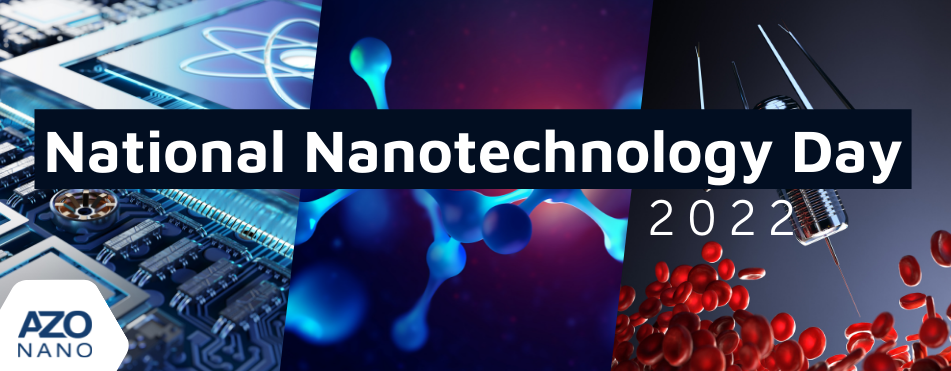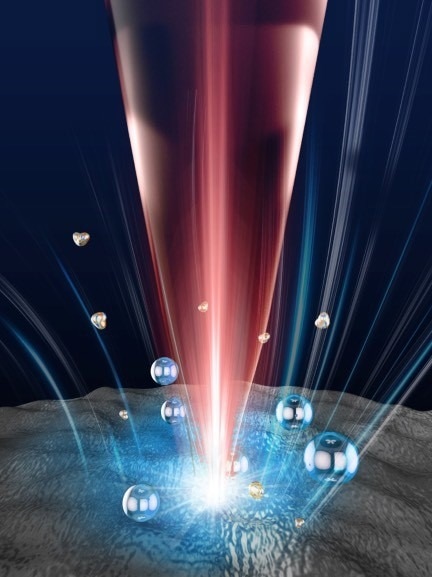
In this interview, AZoNano speaks with Jingang Li from the University of California, Berkley, who offers an introduction to the Nobel Prize-winning technology, Optical Tweezers. We discuss the history behind this scientific tool, its different applications, as well as how Jingang's own research is helping to shape the future of this technique.
Please could you introduce yourself and tell us about your current position and research activities?
I am a Postdoctoral Scholar in the Department of Mechanical Engineering at the University of California, Berkeley, working with Prof. Costas P. Grigoropoulos. I received Ph.D. in Materials Science and Engineering from The University of Texas at Austin under the supervision of Prof. Yuebing Zheng in 2021, and a B.Sc. in Applied Physics from the University of Science and Technology of China in 2017.
My research interest lies in general optics and photonics, particularly in optical manipulation, photonic materials, light-matter interactions, and optical microscopy and spectroscopy.

Opto-refrigerative tweezers © Jingang Li
How did you become involved with this field of research, and more specifically, optical manipulation?
I first encountered optical tweezers during my undergraduate at USTC, when I was attracted to this interesting tool that can use light to control small objects. Later, I started to work on optical manipulation and develop new optical tweezing tools during my Ph.D. study in Prof. Yuebing Zheng’s group in 2017.
What are ‘Optical Tweezers’?
Optical tweezers are scientific tools that use a highly focused laser beam to trap and move small objects like cells, atoms, nanoparticles and droplets in a manner similar to tweezers.
Why was this Nobel prize-winning technology created? Could you discuss the history behind their construction?
Arthur Ashkin first observed the phenomenon of optical tweezers in the 1970s. Later, Steven Chu extended this tool as a method to trap atoms and won the 1997 Nobel Prize in Physics. In the late 1980s, Ashkin and co-workers demonstrated the first application of optical tweezers to the biological sciences, using them to trap an individual virus and bacterium.
Optical tweezers are now widely used in biological sciences to study the forces and dynamics of biological systems. Due to the wide application of optical tweezers in biological systems, Ashkin was awarded the Nobel Prize in Physics in 2018 for this invention.
Optical Tweezers and the 2018 Nobel Prize in Physics - Sixty Symbols
© Sixty Symbols/YouTube.com
What are some of the highlight applications and research innovations of optical tweezers?
First optical tweezers were extended to trap and cool atoms, which was awarded another Nobel Prize in 1997. Second, one unique feature of optical tweezers is the ability to trap and control single cells, which allows the study of cellular properties, cell responses to external stimuli, and cell-cell interactions, etc.
Third, the trapping of other functional particles can also lead to advanced applications, such as drug delivery, photothermal therapy, and volumetric display.
Last, one innovation in this field is to unlock new types of tweezing tools based on different mechanisms to adapt to various applications and extend the capabilities of conventional optical tweezers, such as our opto-refrigerative tweezers.
In 2021, you developed ‘Opto-refrigerative tweezers’ (ORTs) to address issues surrounding sample degradation with typical optical tweezer use. What makes ORTs different, and what advantages can they bring to nanoscale analysis?
Opto-refrigerative tweezers (ORTs) are based on the innovative combination of laser cooling and thermophoresis. Unlike optical tweezers that use a highly focused laser beam to trap objects, ORTs create a temperature gradient field and trap objects via thermophoresis. This new mechanism does not require a highly focused laser beam, therefore reducing the photodamages.
In addition, intrinsic laser cooling, in contrast to the common laser-to-heat conversion, can avoid potential photothermal damage. Thus, ORTs present a new type of non-invasive optical tweezing tool.
ORTs can bring new possibilities in analyzing thermosensitive cells and biomolecules, such as proteins, RNAs, and other molecular substances. Now, these bio-objects can be trapped and studied free of damage. In addition, the stable trapping of quantum dots and fluorescent particles is also promising for bioimaging applications.
What are the next steps for this area of research? Are there any limitations in ORTs you hope to address?
We hope to demonstrate the use of ORTs in biological applications to analyze thermosensitive cells and biomolecules. One major limitation of ORTs is the inability of 3D manipulation, which we hope to come up with a way to overcome.
Optical manipulation at the nanoscale is a rapidly expanding nanotechnology research area with many exciting advancements. What does the future look like for this field?
Currently, optical manipulation applications are mainly at the atomic or cellular level. Nanomedicine and drug delivery are exciting advancements based on optical manipulation since light can precisely move the drug cargo to the desired location and control the release of the drug, but there are many exciting applications beyond this.
One example is to use optical manipulation tool as a manufacturing method to construct functional nanostructures for practical applications. Optical manipulation tools can also be integrated with other tools to study fundamental physics, such as phase transition.
About Jingang Li, Ph.D.
 Jingang Li is a Postdoctoral Scholar in the Department of Mechanical Engineering at the University of California, Berkeley, working with Prof. Costas P. Grigoropoulos. His current research focuses on investigating light-matter interactions at the nanoscale with optical microscopy and spectroscopy.
Jingang Li is a Postdoctoral Scholar in the Department of Mechanical Engineering at the University of California, Berkeley, working with Prof. Costas P. Grigoropoulos. His current research focuses on investigating light-matter interactions at the nanoscale with optical microscopy and spectroscopy.
Jingang has published 14 first-authorship papers in prominent scientific journals, including Nature Communications, Science Advances, Chemical Reviews, Advanced Materials, Nano Letters, ACS Nano, Advanced Functional Materials, etc. His research was highlighted more than 100 times in science news, such as UT News, EurekAlert!, The Daily Texan, Optics & Photonics News, Nanowerk, Phys.org.
He is a recipient of MRS Graduate Student Award, Chinese Government Award for Outstanding Self-Financed Students Abroad, UT Austin University Graduate Continuing Fellowship, and Ben Streetman Prize.
Disclaimer: The views expressed here are those of the interviewee and do not necessarily represent the views of AZoM.com Limited (T/A) AZoNetwork, the owner and operator of this website. This disclaimer forms part of the Terms and Conditions of use of this website.